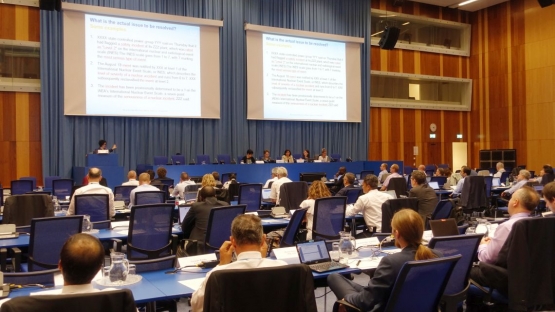Over 70 participants from 51 IAEA Member States and two International Organizations reviewed a draft of the International Nuclear and Radiological Event Scale (INES) guidance manual at an IAEA technical meeting held 23-27 April 2018.
INES is a tool for communicating the safety significance of events associated with sources of ionizing radiation. It was developed in 1990 by the IAEA and the Nuclear Energy Agency of the Organization for Economic Co-operation and Development. The current manual was issued in 2008.
IAEA Member States use INES voluntarily to rate and communicate events that occur within their territory, relying on guidance provided in the manual. Participants in last week’s meeting reviewed the draft that takes into account experiences from past events, in particular the 2011 nuclear power plant accident at Fukushima Daiichi, and the latest IAEA safety standards and guidance.
The revision aligns the manual’s terminology with IAEA safety standards and brings up to date technical data that form the basis for the rating criteria. A new chapter has been added on using INES in public communication. This was done to address challenges faced by public information officers when using the scale in communication to the public.
“The latest revision will bring greater consistency to the use of INES and will assist communicators,” said Meeting Chair Patricia Milligan, Senior Advisor in the U.S. Nuclear Regulatory Commission’s Division of Preparedness and Response. “We hope the meeting will also encourage more Member States to start using this important communication tool.”
The publication of the revised edition will be followed by new IAEA training materials and workshops to support Member States in using the scale.


